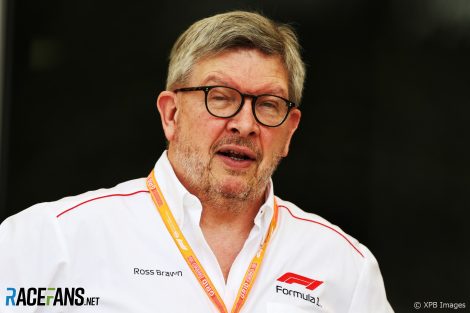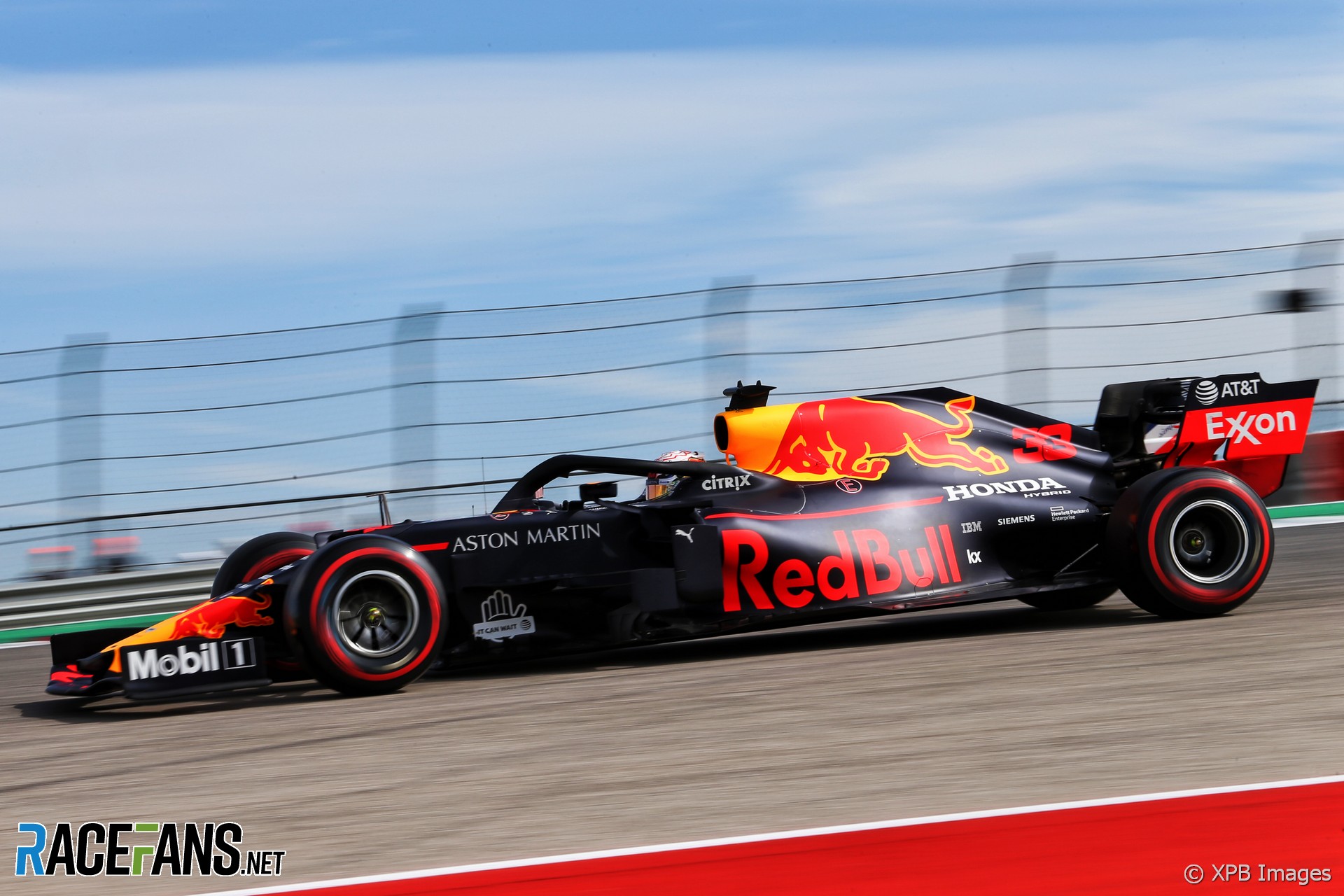Formula 1 motorsport director Ross Brawn has dismissed fears new rules for 2021 could prompt huge spending by teams next year.
The 2021 F1 season will see sweeping changes to the technical rules and new financial regulation imposing a cap on spending by teams. This has prompted concerns cost will rise sharply next year as teams develop both their 2020 cars and try to accelerate development on their 2021 machines before the cap is imposed.However Brawn says existing limits on how much development work teams can do will prevent costs escalating too much.
“[There’s] a lot of comment that there’s gonna be a massive rush in 2020 to work on this car before the cost cap comes in,” he said. “I think we should all remember that the most fundamental change with this car is in the area of aerodynamics, and that’s the area that’s most controlled, even within the existing regulations.
“So I think that is an exaggeration, if I may say, of what’s going to happen next year with the new regulations and the effort the teams will put into it. Because they can’t: the 80 hour [limit] controls how much work they can do in the wind tunnel and therefore they won’t be able to exceed those limits and spend more time on this car. They’ll have to balance that between their existing car and the new car as they do every year.
“So I don’t see that next year is going to be that much different than previous year.”

“You have an unrestricted and uncontrolled amount of spend that you can spend on research and development across other areas,” he pointed out. “And I think for me, I stand by what I said previously.
“I think it would have been better to introduce the cap first and then the regulations a year down the line, because then the budget cap would have constrained the amount of spend. Next year looks to be most expensive ever year in Formula 1.”
Advert | Become a RaceFans supporter and
2020 F1 season
- Pictures: Wrecked chassis from Grosjean’s Bahrain fireball crash to go on display
- Bottas vs Rosberg: Hamilton’s Mercedes team mates compared after 78 races each
- F1 revenues fell by $877 million in Covid-struck 2020 season
- Hamilton and Mercedes finally announce new deal for 2021 season
- F1 audience figures “strong” in 2020 despite dip in television viewers





robinsonf1 (@)
8th November 2019, 13:23
Of course 2020 is going to be the most expensive year to date as it’s the year you get the most bang for you buck. Why wait a number of years to buy/renew a few CNC machines/autoclaives/[insert other expensive machinery] when I can get them now and my budget isn’t effected in the future? Stupid to think otherwise. And I heard from a friend who works in Merc that they plan on doing just that!!
Matteo (@m-bagattini)
8th November 2019, 13:25
I’m no expert but something tells me that if their budget will be capped starting 2021, then 2020 will be a year when every expendable cent will be spent (plus maybe something borrowed). This of course includes the development of a completely new car and anything that may help in the near future (from wind tunnels to simulators, from coffee machines to repainting the walls).
Ronald (@mosquito)
8th November 2019, 14:12
If the cost cap is cost based as the name implies depreciation should be included and capex in windtunnels and other facilities will lead to increased costs from 2021.
In the media I get the impression the regulations imply a cash cap. Regrettably most media outlets are notoriously bad at reporting on financial implications, so I don’t have a clue how the costcap will work out.
bosyber (@bosyber)
9th November 2019, 6:12
Well said @mosquito; though I can believe that for the top teams, every machine that has been in use long enough to be written off and can be replaced w/o major disruption in the season (so maybe not that windtunnel, that is too late now!) will be replaced, so they will have the newest toys they can get.
Adam (@rocketpanda)
8th November 2019, 14:50
Didn’t most of the teams warn them they’d do this though? Having to build a 2020 car and a 2021 car to different regulations and make sure they have everything they could possibly need BEFORE the cost cap comes in? Like sure they don’t HAVE to spend that money but they’d be stupid not to if they have it and want to remain competitive.
Luke S (@joeypropane)
8th November 2019, 15:01
So basically, Williams are double-stuffed, then?
And will Renault want to even bother when they have no customer teams and look to be falling even further behind the other big players?
Dave
8th November 2019, 15:31
I don’t see why Renault are so widely assumed to be unhappy with the results of their spending. It hasn’t been towards the top end of what they might hope for, but being mid-table in F1 is still good for their brand. F1 is expensive, but not massively so on the scale of Renault’s advertising budget.
socksolid (@socksolid)
8th November 2019, 17:18
I wonder what happens with the design areas that don’t have such limits? Aero is limited in both wind tunnel time and cfd calculations. Here is a good article from race car engineering about it:
https://www.racecar-engineering.com/featured/tech-explained-2018-f1-cfd-regulations/
The main takeways from that article is that wind tunnel time and cfd computing power limits in teraflops. The articles goes way deeper into it too. You also have the computer chips themselves and some teams used bespoke amd chips to get around some of the cfd limitations in the past. The richer teams also have better wind tunnels with motion platforms. For a new ground effect concept all of this will help the certain teams a lot. Another area is the cfd tools themselves. All in all richer teams can have better software, better hardware and better wind tunnels. And they can now spend 10x as much on all things which are not restricted which also allows them to get more out of the cfd and wind tunnels.
Jimmi Cynic (@jimmi-cynic)
8th November 2019, 22:45
Good points, @socksolid.
The recent corporate incarnation of Ross seems very naive – as required by Liberty Propaganda Command.
The old team boss Ross, would be instructing his engineers to exploit any tiny advantage as outlined above while spending is unregulated.
Stephen Crowsen (@drycrust)
9th November 2019, 0:27
I guess my lack of understanding on this subject is obvious, but isn’t this issue being sightly overblown? Somewhere along the way a team has to apply a cutoff in terms of technical advancement for some aspect of next season’s car. If they didn’t apply technical development cutoffs then they’d never complete their car because technical improvements probably happen on a weekly basis, and with the acceptance of a new development comes the possibility you may have to modify some other parts of the car, which could previously have been designed to the latest technological thought. Every F1 car will be a collage of technical cut off dates. For example the chassis will have one cut off date, the underneath of the car another cut off date, the radiators another date, etc. So an F1 car is built with lots of cut off dates, each one designed to give the team the best choice of available technology, and if someone comes rushing into the office on the Monday after a particular cutoff with some miraculous new way of doing something … “Thanks, but it’s too late for next season, we can’t use it now, just put that information in the 2021 filing cabinet over there.”
Wouldn’t the same reason be a good reason to not put too much effort now into designing the 2021 car, but rather wait a bit, e.g. next year? Because a car is a collage of cut off dates, doesn’t that suggest you don’t want to start designing those aspects of the car too soon because of the potential of designing something only to discover there was some better way of doing it. Say you were to start designing the rear suspension of the 2021 car this year, don’t you run the risk that after a few GPs with the more powerful power units next year you might be wishing you had delayed designing the 2021 suspension until then? If that did happen, then you’re stuck with at least thinking you’ve got a weaker suspension system than you needed to have.